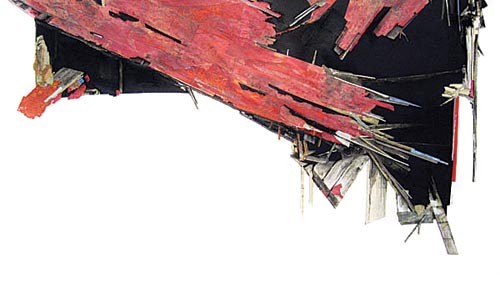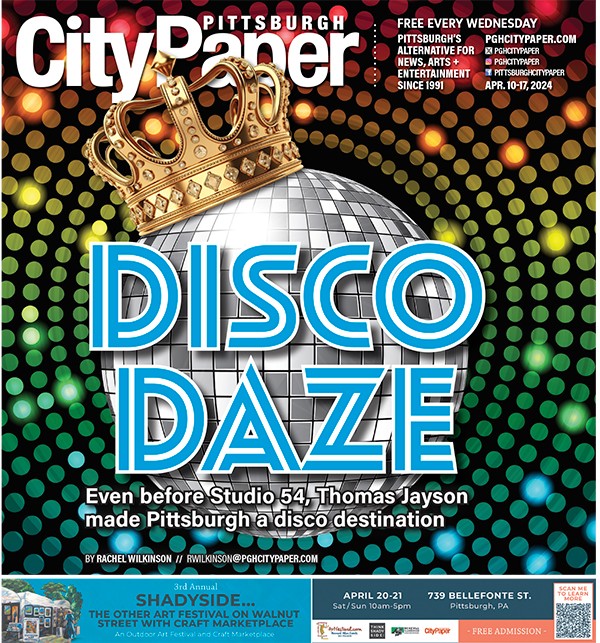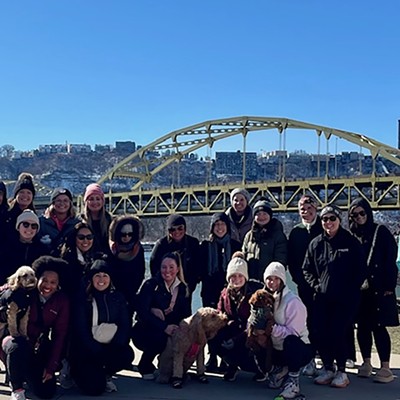The exhibition Ruination, at Pittsburgh Center for the Arts, features large drawings by local artist Seth Clark, who finds his voice in the aesthetics of fragmentation and decay. Ruination re-affirms the significance of the fragment as a persistent factor in modernity by visualizing the devastating economic decline of post-industrial America.
The fragment -- as understood by historian William Tronzo -- is "volatile and unpredictable ... not simply the static part of a once-whole thing but itself something in motion." In Ruination, the fragment maintains this duality, playing both a physical and symbolic role.
In Clark's drawings, layers of paper scraps, flyers and occasionally text overlap to create tactile surfaces characterized by subtle shifts in depth. Particles of urban rubbish used in works like "Collapse V" are often scavenged from sites located miles apart. Through Clark's creative process, each fragment transcends its individuality to become, collectively, archetypes of urban blight and architectural collapse.
Like the anti-objects of Cornelia Parker, Ruination assembles the remnants of modern life to symbolize the decline of America's industrial might. One drawing, simply titled "Collapse," suggests the crumbling mills found in many postindustrial communities, from Detroit to Georgetown, S.C. Clark's sensitive line quality references the fragility of these areas and the vacant buildings left behind.
Nearer to home, former steel town Braddock is literally a fragment of its previous self. But it's also certainly not just the "static part of a once-whole thing." Just as individual fragments in Ruination achieve archetypal stature through the collective whole, so too is Braddock becoming a symbolic figure in the greater fight to save post-industrial America.
There, Mayor John Fetterman has campaigned to market Braddock as a creative community, ideal for artists looking to live and work affordably. Hoping to initiate rebirth, local organizations like Unsmoke Artspace host exhibitions and artist residencies, drawing national and international attention.
Fragmentation is often both the cause and result of overall change. In Ruination, Clark alters the use-value of found materials, allowing them to overcome their commonality. Unfortunately, change on a socio-economic level takes much more time to unfold. While the future of Braddock and other post-industrial communities remains uncertain, exhibits like Ruination keep the discussion alive.
Ruination continues through March 20. Pittsburgh Center for the Arts, 6300 Fifth Ave., Shadyside. 412-361-0873 or www.pittsburgharts.org















